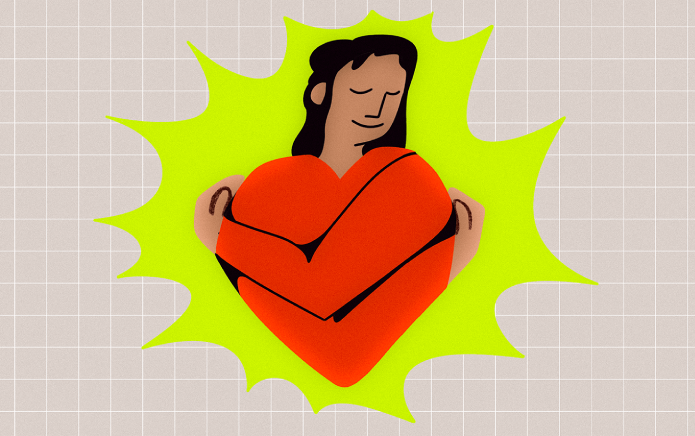Ultimately, aromanticism exists on a spectrum and there are so many diverse experiences within the community. By learning more about these identities, we can begin to better understand the nuances of human attraction and love. Greyromantic folk, for example, define themselves as experiencing romantic attraction with lesser frequency or intensity – and may not be interested in pursuing romantic relationships. Cupioromantic people, on the other hand, don’t tend to experience romantic attraction – but do desire romantic relationships.
Tyger Songbird, 33, identifies as aromantic-asexual and hopes that amatonormativity – the presumption that monogamous romantic and sexual relationships are the norm – can be addressed within the queer community. “Far too often, asexual people and aromantic people are added as an afterthought instead of as a group in the LGBTQIA+ community,” the activist explains.
Far too often, asexual people and aromantic people are added as an afterthought instead of as a group in the LGBTQIA+ community
Songbird also hopes that platonic relationships are given more visibility and acknowledgement. “Platonic love is often seen as an inferior type of love in relation to romantic love,” he says. “Even in the LGBTQIA+ community, so many people see romantic and sexual love as the only love that truly matters in life which excludes not only aromantic people but also sex-repulsed asexual people like me.”
Anna Jastrzembska from Sweden, 30, identifies as demian (someone who must experience a strong emotional bond before romantic or sexual attraction can be felt), found Valentine’s Day, this year, as an opportunity to fully experience their identity. This year has been about embracing being demi and getting to experience both worlds: an aro life but also unexpectedly falling in love myself.” Much like Aromantic Spectrum Awareness Week, Jastrzembska was able to see how different sexualities can be liberated through visibility and community education.
Ultimately, aro folks aren’t some outlier of the queer community. Rather, they are an integral component – and are pushing forward radical new ways of living, understanding identity and forming relationships. Whether they are engaging in queerplatonic relationships, which are based around emotional commitment rather than romantic attraction, or coining terms like “tertiary attraction”, to describe attractions that sit outside of the romantic or sexual, ace and aro folk are pushing the zeitgeist forward when it comes to love and sex.
“We need to remember that romance is not the end goal for everyone and that’s okay. You don’t need romantic love to have a full and happy life,” Jastrzembska says. “The world is hard enough for queer people and we need to have each other’s backs.”
